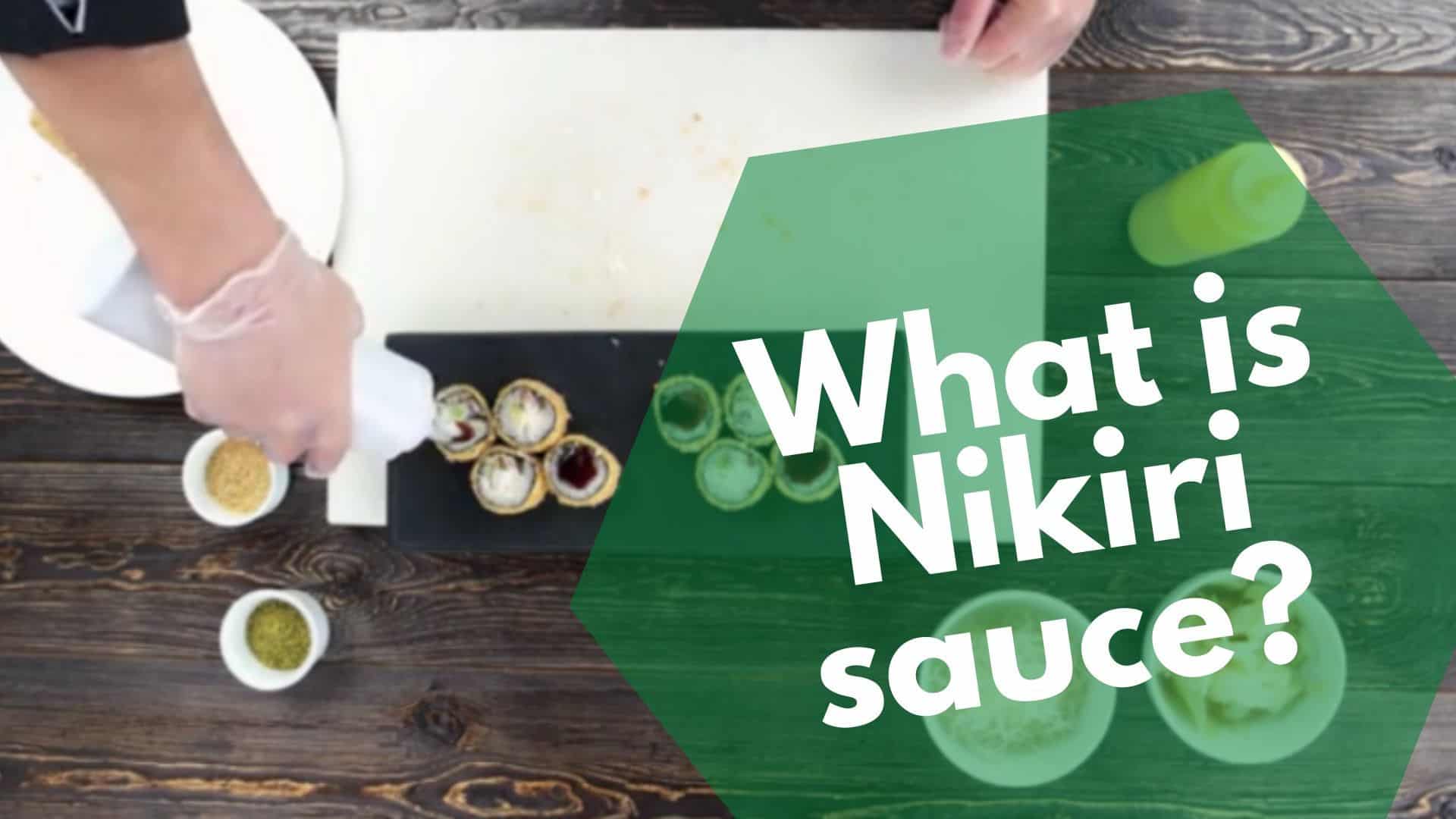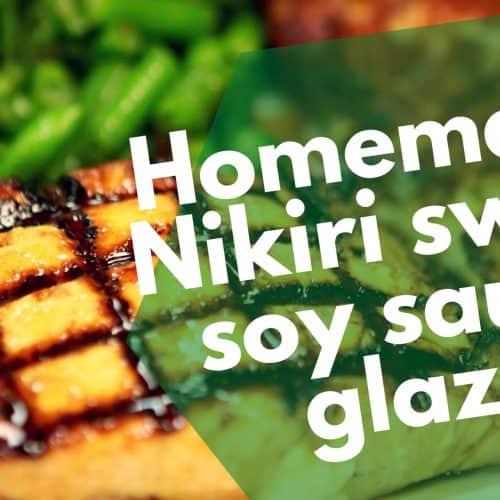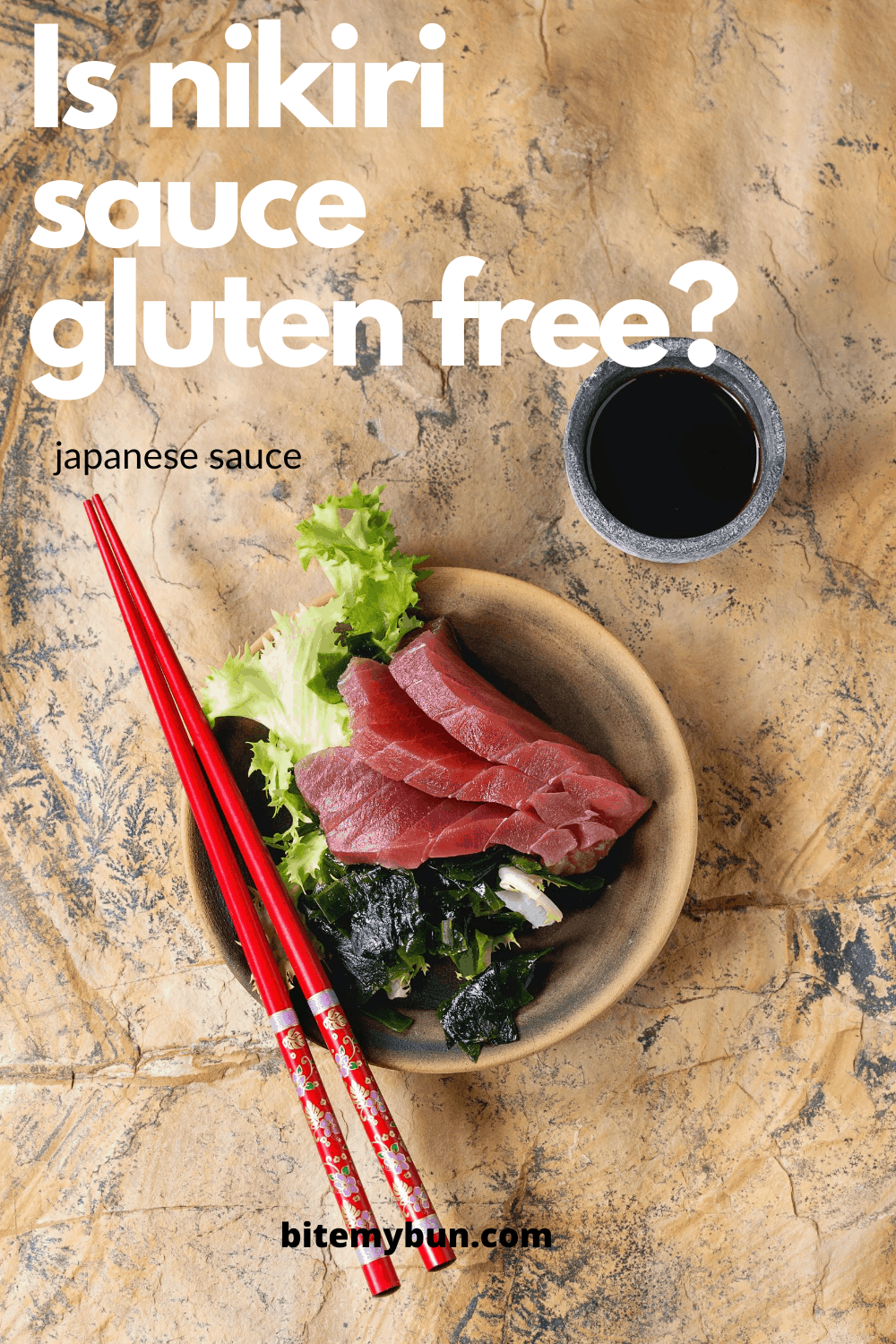Nikiri sauce: a great recipe & the traditional brushing technique
If you are looking for something to flavor exotic dishes with a delicate taste, nikiri sauce may be your condiment of choice.
Nikiri is a thin glaze that is often brushed on fish in Japanese cuisine before the fish is served. Once served, you won’t need to add soy sauce or any other condiment. The nikiri will be enough.
It is also commonly used on sushi and is especially delicious on sashimi.

In general, it can be used to provide flavor to dishes that might be overwhelmed by soy sauce or other stronger tasting condiments.
Read on to find out more about nikiri, what it’s made from, and more.

Check out our new cookbook
Bitemybun's family recipes with complete meal planner and recipe guide.
Try it out for free with Kindle Unlimited:
Read for freeIn this post we'll cover:
Nikiri Sauce Origin
There is not much information available concerning how nikiri sauce originated. However, it was popularly used during the Edo period in Japan.
This period lasted from 1603 to 1868 and it was the time when Japan was under the rule of the Tokugawa shogunate and the country’s 300 regional daimyos.
The word nikiri means ‘to bring to a boil’. The sauce was born out of the desire to create the perfect bite. It is brushed on to sushi and other foods to give it the ideal flavorings.
The concept of creating the perfect bite is one that is well known throughout Japan starting with feudal Japanese times and continuing on to the rise of Imperial Tokyo.

Nikiri sauce: homemade sweet soy sauce fish glaze recipe
Ingredients
- 10 tbsp soy sauce
- 2 tbsp dashi
- 1 tbsp mirin
- 1 tbsp sake
Instructions
- Once you have the ingredients gathered, you will want to mix them all in a saucepan.
- Heat until it’s almost boiling but don’t let it boil completely. Then remove from heat and let it cool.
Another variation is to make it with 4 parts tamari and 1 part mirin. Then simmer until it’s slightly reduced, remove from heat and let cool.
Or you can always buy a store-bought one.
Nikiri Sauce
As opposed to other kinds of sauces, nikiri is brushed on by the chef themselves. It is never left as a dipping sauce.
This is because, when using nikiri, chefs attempt to achieve the perfect bite with just the right amount of sauce.
If they leave customers to dip for themselves, they may get to much or too little on the food.
When food is served with nikiri sauce on it, you know you are getting the perfect amount and no other condiments are needed.
To get the flavoring just right, chefs should use a pastry brush to apply the nikiri sauce using a specific technique.
When using the brush, chefs are advised to be gentle and use a dabbing motion. This will produce surface tension and provide just the right amount of sauce.
Some beginners tend to be heavy-handed when applying sauce to sushi, but the secret is to take a gentle approach to produce a thin layer that provides just the right amount of flavor to the food.
Also read: these are the 9 best sauces for sushi you should try
What Does Nikiri Sauce Taste like?
Nikiri is often called ‘sweet soy sauce’. It is not dissimilar to soy sauce but it has a sweeter, lighter taste, and a distinct umami flavoring.
Is Nikiri Sauce Gluten-Free?

People who follow a gluten-free diet avoid eating wheat. For most gluten-free people, eating wheat exacerbates existing health conditions.
Some claim that eliminating wheat just makes them feel more focused.
Although the ingredients used for nikiri sauce can vary, most use soy sauce as the primary ingredient. Because soy sauce contains wheat, it is not gluten-free.
Therefore, nikiri sauce is not gluten-free and it should be avoided by those on a wheat-free diet.
Is Nikiri Sauce Keto?
To determine if nikiri sauce is keto, we must once again determine if soy sauce is keto.
Those on a keto diet try to eat foods that are low in carbs and high in healthy fats. Soy sauce is low in carbs and is, therefore, keto-friendly.
However, those who eat keto usually prefer to eat foods that are clean. Soy sauce is not the cleanest food so those on a keto diet may want to avoid it.
Is Nikiri Sauce Vegan?
When made in the traditional way, which is to say, when comprised of a combination of soy sauce, mirin, dashi and sake, yes, nikiri sauce is vegan.
This is because none of its components are made of any animal byproducts.
However, if nikiri sauce is not made in the traditional way, it may contain animal byproducts which means it is not vegan.
Furthermore, there is always the possibility that one of the ingredients have been created with animal byproducts.
If you are set on eating vegan, it is always best to ask the chef what your nikiri sauce is made with before eating it.
Best Nikiri Sauce Substitutes
Although nikiri sauce is well known as providing the perfect taste to sushi, it is rarely available at restaurants.
However, most chefs will not advise that you do not use soy sauce or any other condiment as a substitute. These sauces will only overpower the terrific taste of the sushi.
Jiro Ono is a sushi chef who is considered the greatest sushi craftsman. He is known for his innovative sushi preparation methods.
Ono is a proponent of nikiri sauce and advises that, if you can’t find nikiri, you should eat the sushi on its own with no sauce applied.
He goes on to say that this is a liberating experience and one that should be experimented with in many dining rooms. So the best substitute might just be to use no sauce at all.
Here’s a clip from the Yamamoto documentary where you can see his light stroke when applying the sauce to the pieces of fish, a great movie by the way that you should check out if you get the chance:
Nikiri sauce provides a taste experience that is second to none. It should be enjoyed and never underestimated. How will you be using it to add life to your next culinary experience?
Also read: have you tried this sushi eel sauce yet?
Check out our new cookbook
Bitemybun's family recipes with complete meal planner and recipe guide.
Try it out for free with Kindle Unlimited:
Read for freeJoost Nusselder, the founder of Bite My Bun is a content marketer, dad and loves trying out new food with Japanese food at the heart of his passion, and together with his team he's been creating in-depth blog articles since 2016 to help loyal readers with recipes and cooking tips.
